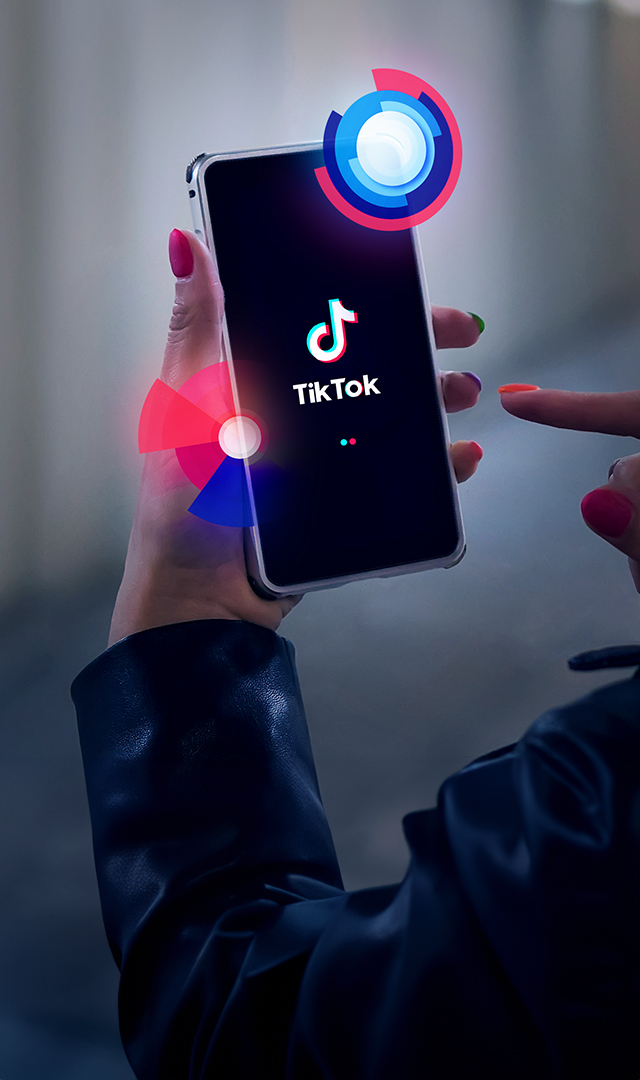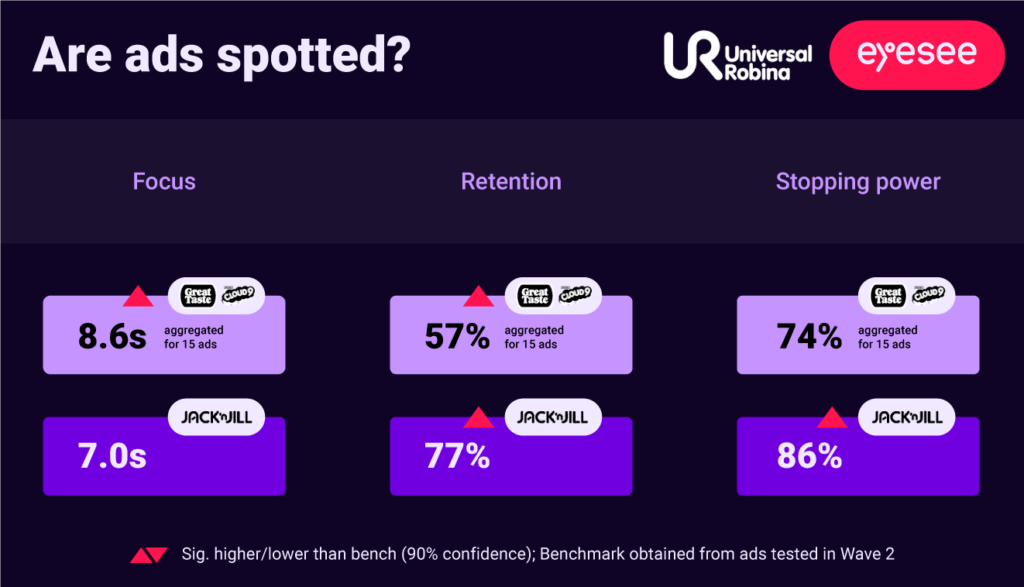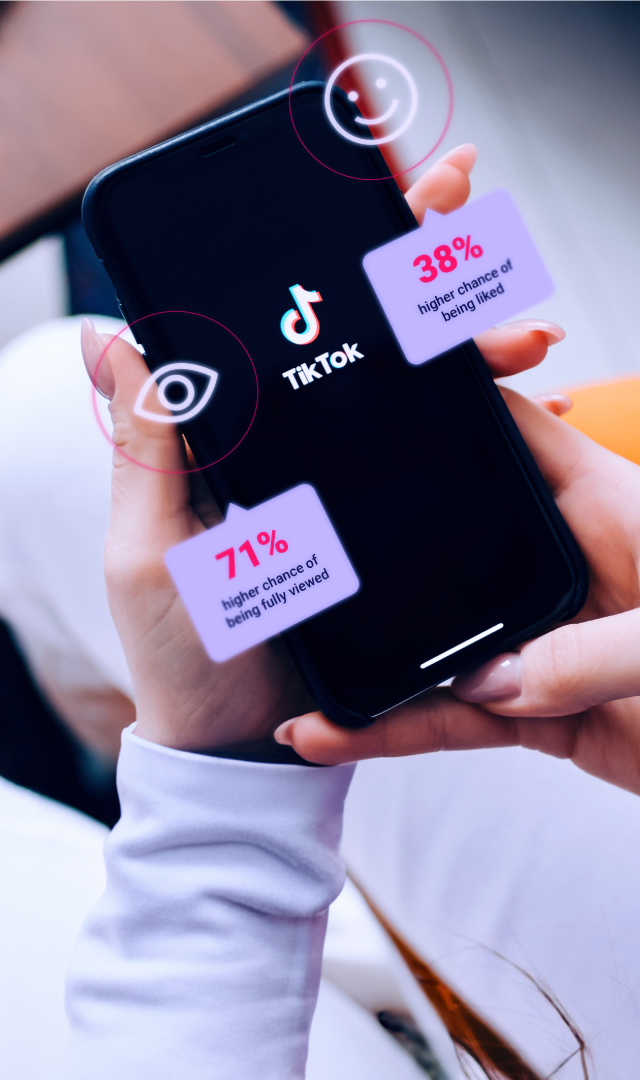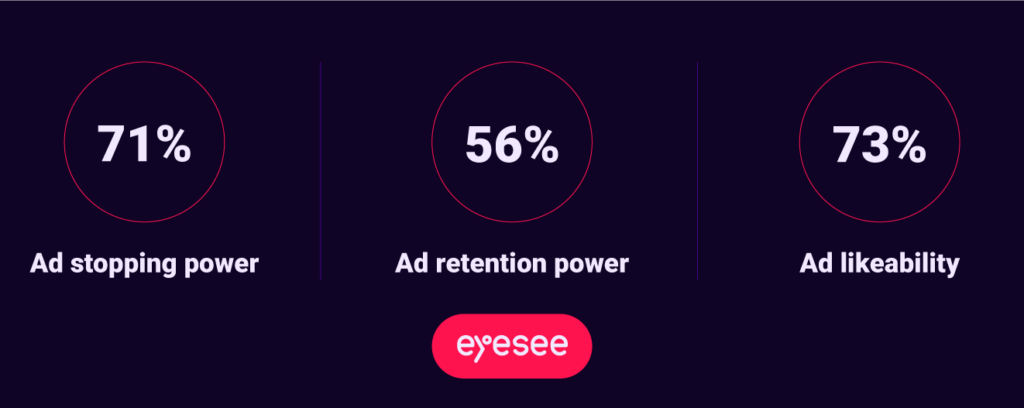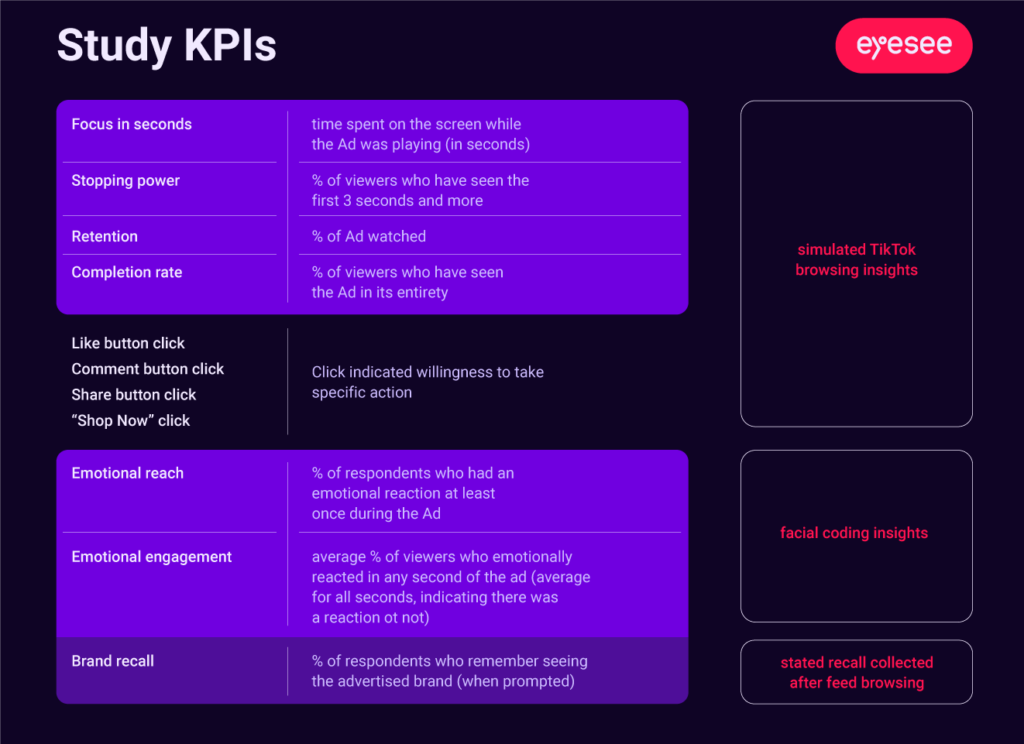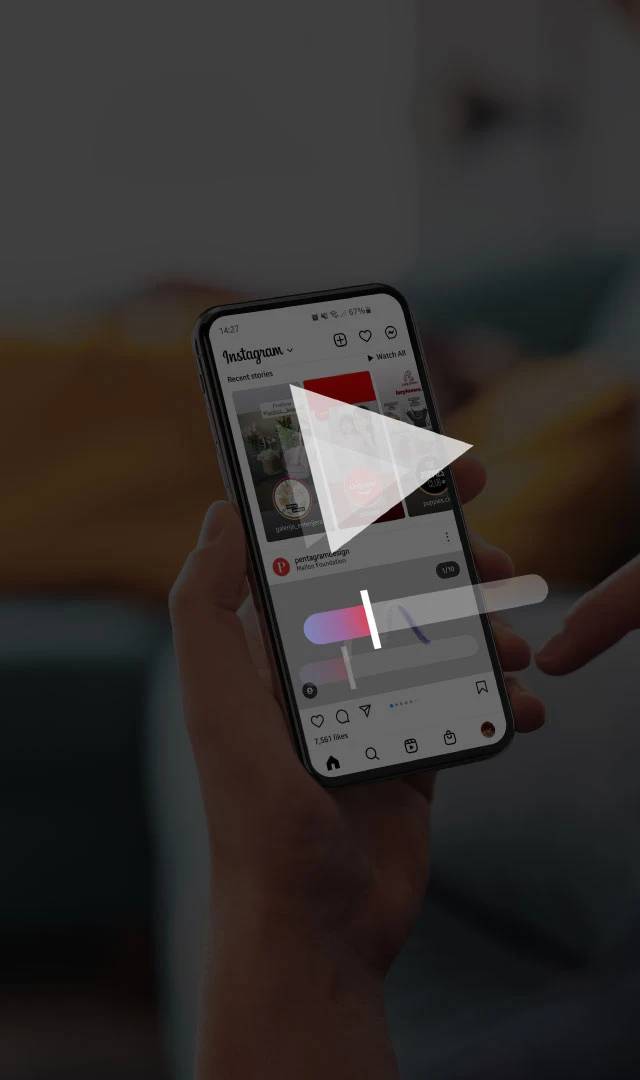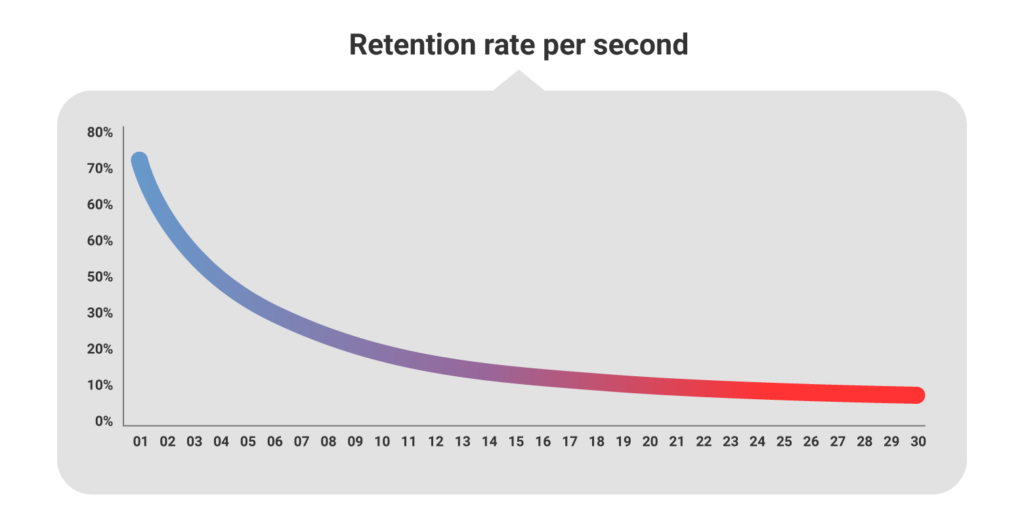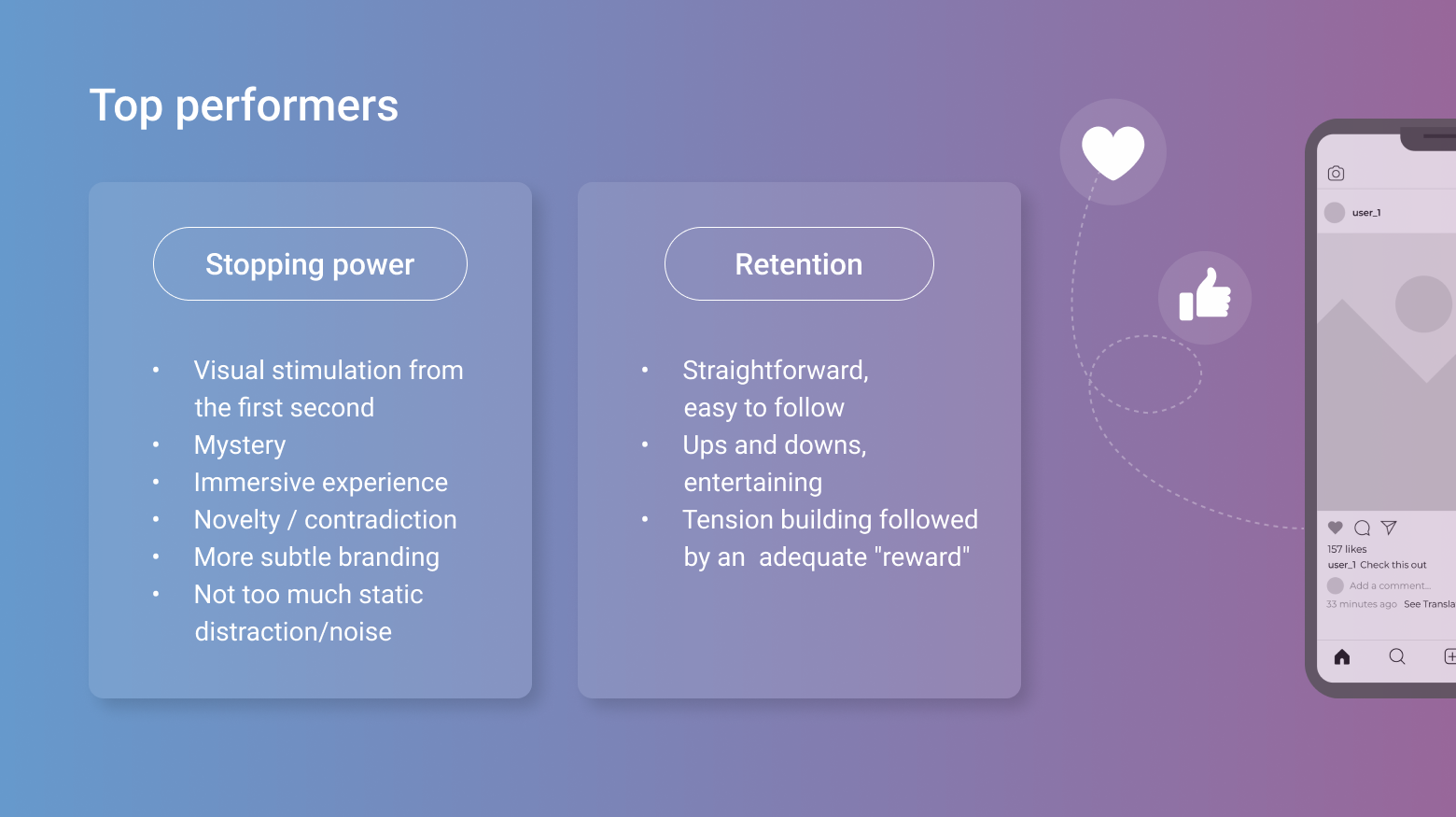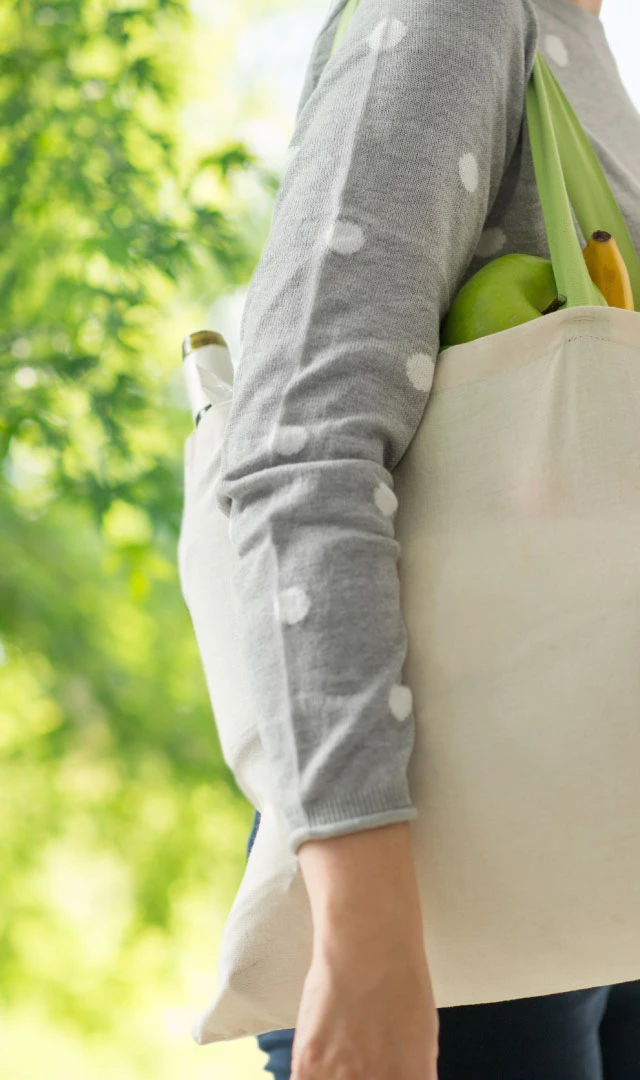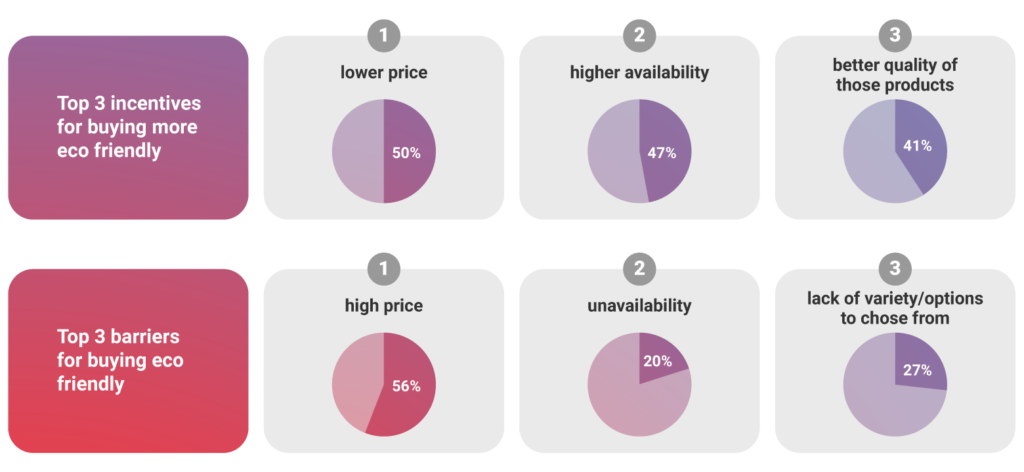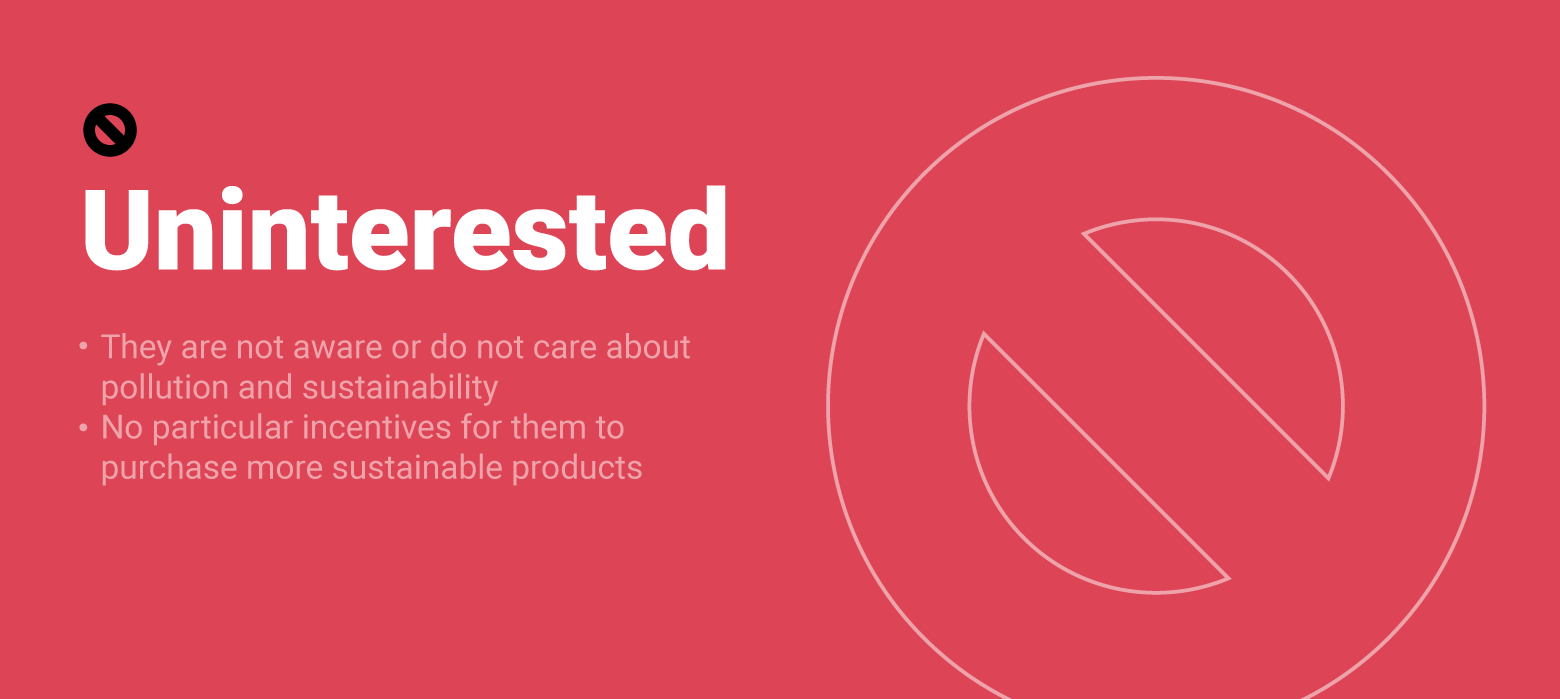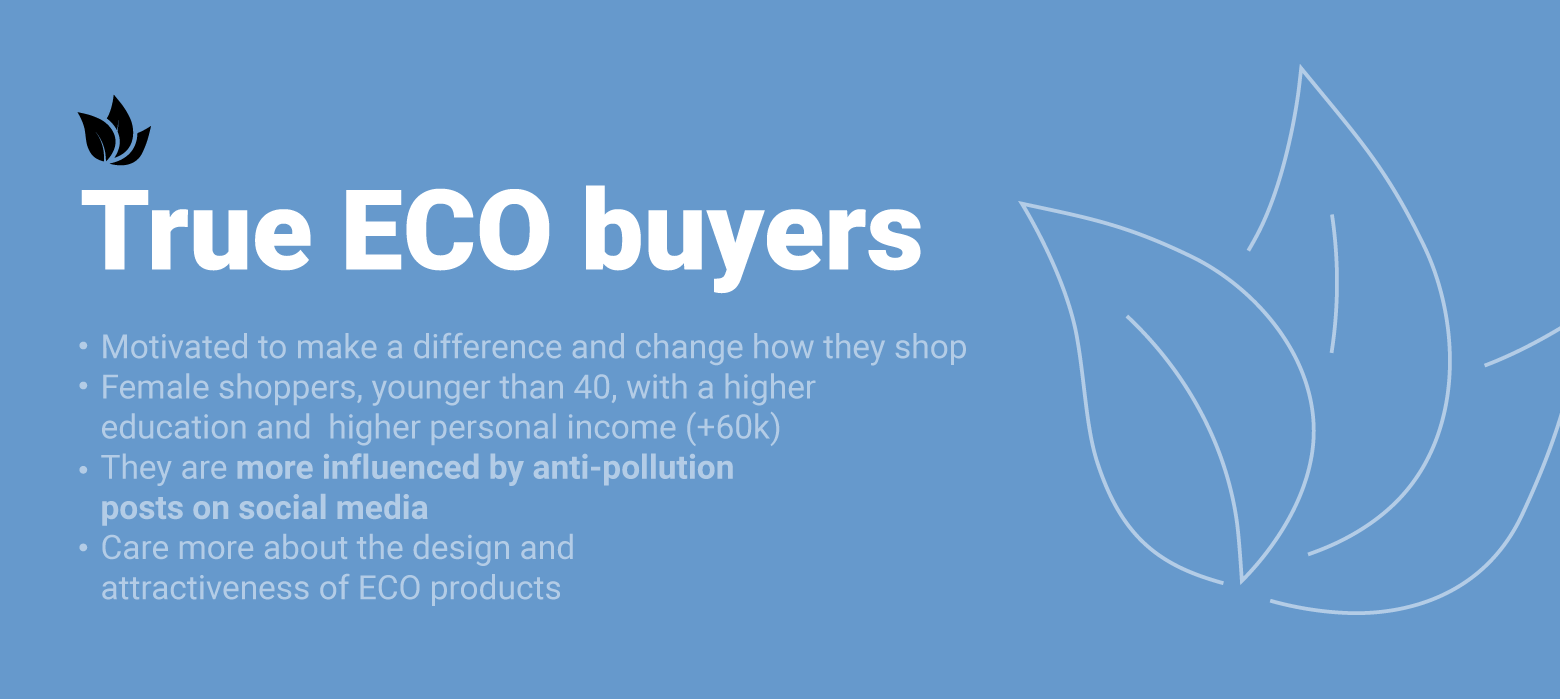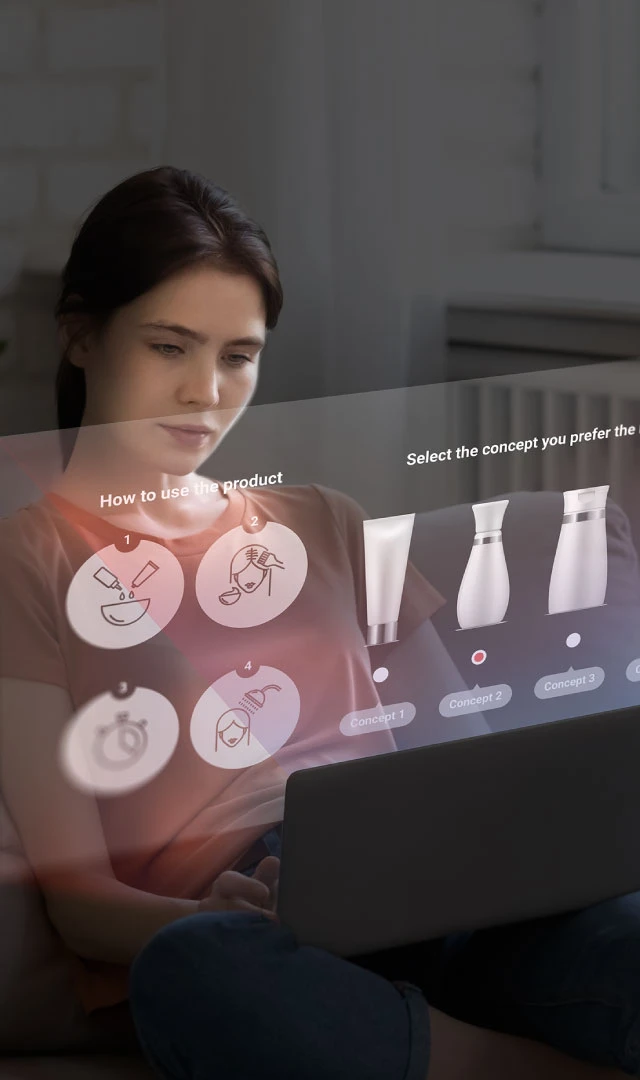E-commerce is now an essential part of every consumer’s shopping habits. Online and offline shopping experiences are more intertwined than ever before, and as we discussed in the most recent Deep Dive episode with Morana Kristek (New Business Development Director at EyeSee) and Rebecca Lacerda (client-end e-commerce thought leader), a holistic approach to shopper behavior is critical to planning both online and offline shopping experiences.
To make some kind of system in such a branched shopper movement and try to be as predictive as possible, keep these five things in mind.
Map the market
In an average supermarket that contains around 50k SKUs, consumers spend only 5 seconds per aisle, while EyeSee’s data shows that online shoppers browse the product list page between 15 and 20 seconds searching for the right item. These numbers tell us that competition is fierce and attention spans are challengingly short; every product touch point counts, whether it is in the online or offline world. So the first thing you want to do is map the market by asking these questions.
Who is this consumer? What are the consumers looking for? What are the relevant players in the segment or industry I’m playing in? Who are my competitors? Which are the platforms that will complement the assortment that I’m offering or the service or experience that I’m offering through my platform? And then, how are those players positioned in terms of pricing, brand positioning, brand potential, et cetera? You may not have all of the answers right away, but as you begin to research the market, answers will emerge one question at a time.
Never lose sight of the bigger picture
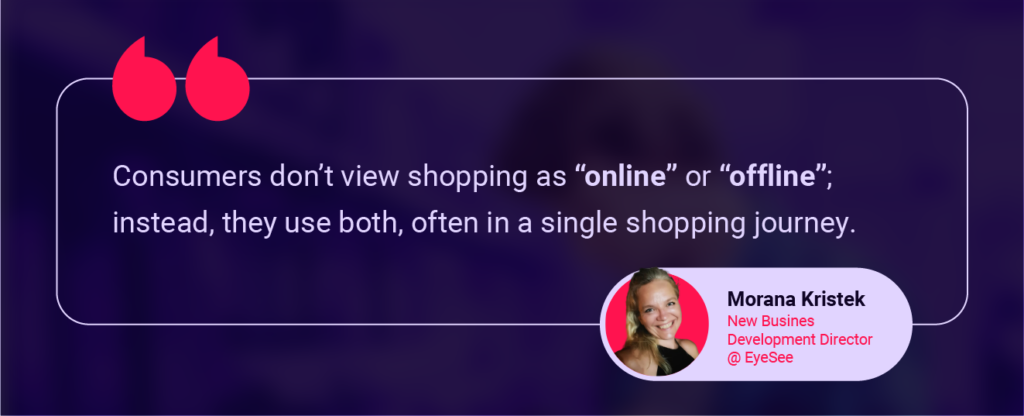
One thing that we should bear in mind is that when we are thinking about online and in-store consumers, we are talking about the same people. This whole separation that we do between online and offline as if they were completely separate worlds is not very accurate because nowadays what we have is a hybrid experience with a hybrid consumer who many times researches or searches for the product online already knowing that they will buy offline, or the other way around.
When we accept an in-context holistic approach can we position our product in the e-commerce market correctly. Only a few people end up clicking on the ad itself (2%), so do not expect your revenue to increase from ad conversion. The way the ads influence the shoppers is that they subconsciously drive interest in the advertised product, which then gets purchased on its primary position i.e. the list. However, this does not work for all products and all categories equally. An uplift in brand purchase can be as high as 40% for different categories, but as low as non-existent for others. To find out more about it read our Leverage ads in online shopping: Amazon Fresh behavioral study.
Be present at the key touchpoints
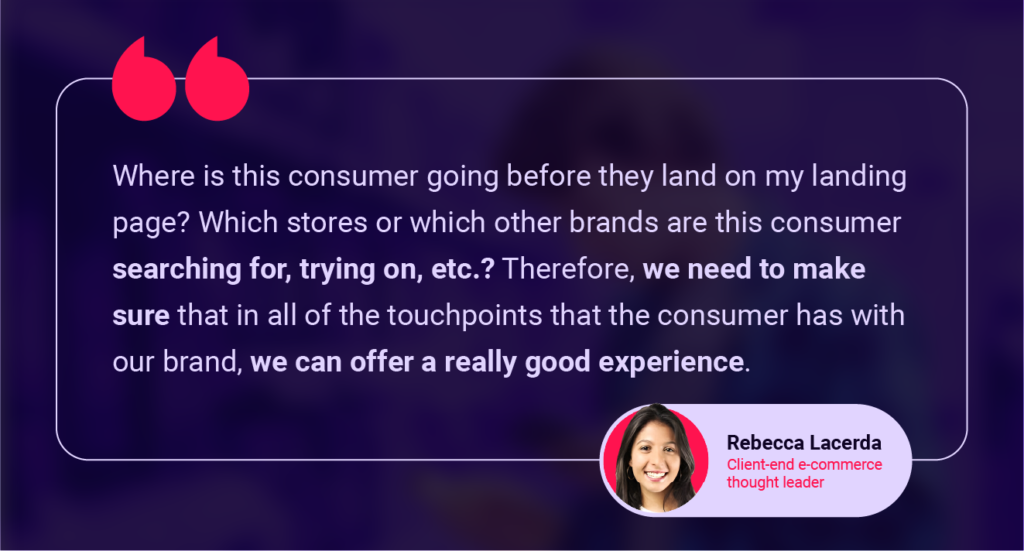
If we look only at the online consumer movement, we can see that it is far from linear. Passive tracking is the predictability tool you need. It helps to understand not only the consumer’s motion but the keywords of consumer language too. It answers key questions
- Which touchpoints are most frequently visited?
- What is the typical number of visits?
- Where do visitors come from?
- Where do they land on the retailer’s website?
Having these answers means you will be able to wisely direct communication, pick the right product placements, and make the ROI certain. There are four stages of passive tracking set up:
- Defining all the keywords relevant to the category of interest
- Programming the study and implementing all the relevant keywords
- Gaining respondents’ consent to pull their browsing history
- Pulling browsing history for the analysis, including any predefined keywords
It can be applied throughout 30, 60, or 90 days. Along with Eye Tracking, Surveys, and Path to Purchase, buying your product will be the final customer destination, no matter the road they take.
When a consumers are on your landing page, make sure not to lose them
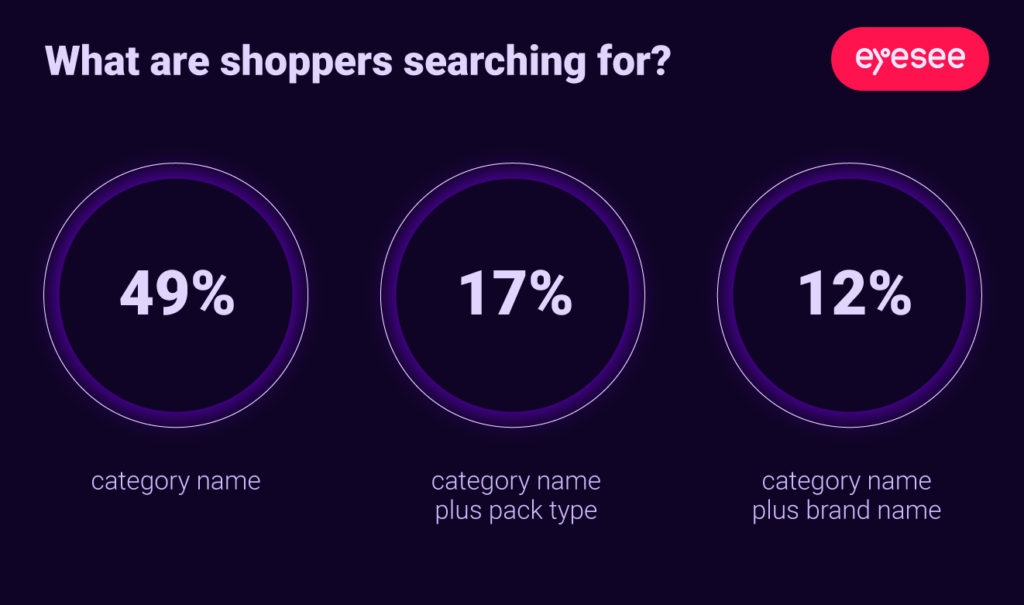
Around 70% of e-comm shoppers abandon the cart without completing the purchase, and there are many reasons for that – maybe they just investigated online and will shop offline; maybe they need more time to decide; but it can also happen that the process of checking out is too complicated and not easy to understand, so by fixing it, you directly increase conversion rates.
Did you know that when shoppers search for a product 49% of them search category name, 17% of them search for category name plus pack type and only 12% of them search for category name plus brand name. Test the path to purchase shoppers’ behavior.
In EyeSee we track how a person navigates through the live page (so it’s a real behavior, or as close as it can be), and we also expose consumers to some relevant static pages, usually a Product Listing Page (PLP is similar to a shelf in a regular BM store, it’s just much more cluttered and pictures of products are smaller; imagine a PC or mobile screen with a list of hundreds of products that you scroll through) and Product Details Page, but it can be anything else, such as Search Result Page, Add to cart/Checkout process, A+ Premium content (or any Promo content), whatever we think might be relevant to investigate or have indications it might be a bottleneck. On static pages, we want to know where consumers’ attention goes, for how long, and how visible or engaging the products and website elements are.
When top to bottom isn’t an option, reverse it

Most commonly, managers choose a top-down approach: to start first with a strategy to identify who our online shoppers are, where they search for our product, and what the drivers are for choosing specific channels, then move to testing shopper behavior and the path to purchase on specific details, and then, in the third level, test tactical marketing assets like ads, packs, banners, standard pack versus hero image, reviews, and checkout. However, sometimes it might be a good idea to take a bottom-up approach. This is the case when you don’t have a firm digital strategy yet but, for example, want to get some quick wins. You want to showcase that digital testing makes sense and that you can have wins in terms of conversions, a smoother consumer journey, and a better consumer experience. So, for example, you can test the Regular Pack versus the hero image pack, and here, you can show your departments and your wider team that the hero image performs significantly better in terms of conversions, sales uplift, and brand uplift. This is an advantage to use to get more backup to do wider-range service and maybe even create a complete digital strategy.
Find out more about online advertising in the related blog about what makes a good social media test or case study about effective online pack shots.

